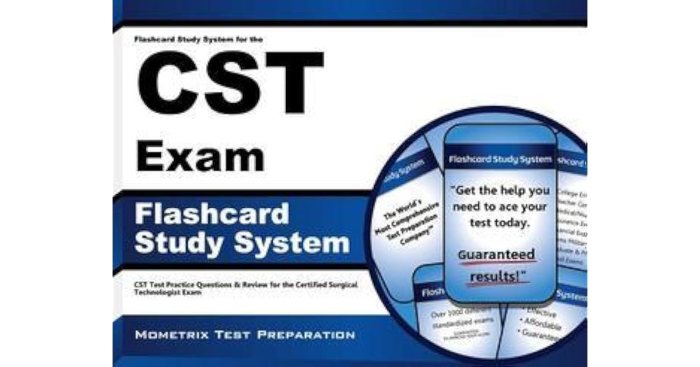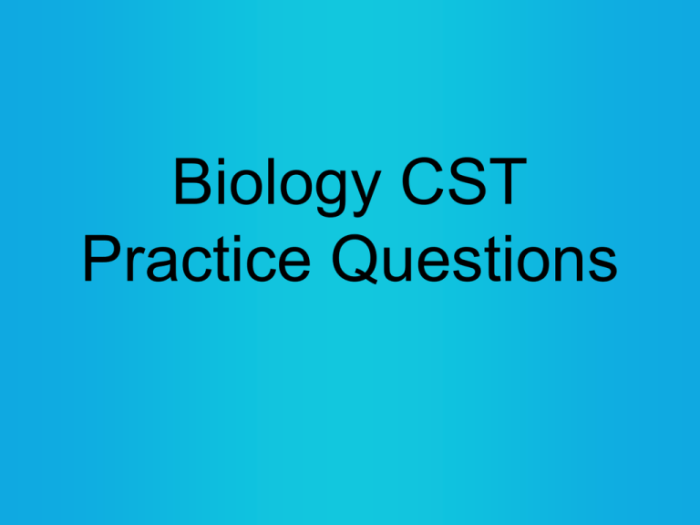CST students with disabilities practice questions present a unique set of challenges and opportunities in the academic realm. This comprehensive guide delves into the specific difficulties faced by these students, explores effective support strategies, and highlights valuable resources to empower them towards success.
Understanding the challenges and implementing tailored support systems are crucial for fostering an inclusive learning environment. This guide provides a roadmap for educators, administrators, and students alike to navigate the complexities of supporting CST students with disabilities.
Challenges Faced by CST Students with Disabilities

Students with disabilities pursuing Computer Science and Technology (CST) face unique challenges that can hinder their academic progress. These challenges stem from cognitive, physical, sensory, or emotional impairments that may impact their ability to access, process, or demonstrate knowledge and skills.
Common Barriers and Difficulties, Cst students with disabilities practice questions
- Difficulty understanding complex technical concepts and algorithms due to cognitive or learning disabilities
- Challenges in coding, debugging, and problem-solving due to fine motor or coordination impairments
- Barriers in accessing online resources and course materials due to visual or auditory impairments
- Emotional or psychological distress due to the demanding nature of CST programs, which can affect focus and motivation
Impact on Learning Experiences
These challenges can have a significant impact on CST students with disabilities, leading to:
- Lower academic performance and difficulty meeting course requirements
- Increased frustration and anxiety, which can hinder learning and participation
- Reduced self-confidence and a sense of inadequacy, affecting overall academic experience
- Potential dropout rates if challenges are not adequately addressed
- Providing extra time for assignments and exams to allow for slower processing speeds
- Offering assistive technologies, such as text-to-speech software or mind mapping tools, to support comprehension
- Breaking down complex concepts into smaller, manageable chunks to enhance understanding
- Providing ergonomic workstations with adjustable chairs and keyboards to reduce discomfort and fatigue
- Using adaptive equipment, such as voice-activated software or switch controls, to facilitate coding and problem-solving
- Offering alternative methods of assessment, such as oral presentations or demonstrations, to accommodate physical limitations
- Providing closed captioning for videos and transcripts for audio materials to enhance accessibility for deaf or hard of hearing students
- Using large-print materials and adaptive software to accommodate visual impairments
- Offering tactile or sensory aids, such as fidget toys or stress balls, to reduce anxiety and improve focus for students with sensory processing disorders
- Providing counseling or support services to address stress, anxiety, or emotional challenges
- Creating a supportive and inclusive classroom environment that fosters a sense of belonging
- Encouraging peer support and collaboration to promote a sense of community and reduce isolation
- Disability Services offices at colleges and universities provide accommodations, assistive technology, and counseling
- Student support groups offer peer support and a sense of community
- Tutoring and mentoring programs can provide academic assistance and guidance
- Text-to-speech software converts written text into spoken audio, aiding comprehension for students with dyslexia or visual impairments
- Mind mapping tools help students organize and visualize complex information
- Adaptive keyboards and mice accommodate physical limitations, allowing for easier typing and navigation
- Scholarships and grants specifically designed for students with disabilities
- Federal student loans and work-study programs can provide financial assistance
- Assistive technology can be covered under certain insurance plans or government programs
- Ensuring equal access to course materials and activities
- Respecting the dignity and individuality of students with disabilities
- Maintaining confidentiality and protecting student privacy
- Developing innovative assistive technologies and pedagogical approaches to address specific learning challenges
- Investigating the effectiveness of different support services and accommodations for CST students with disabilities
- Exploring the impact of inclusive teaching practices on the academic success and self-esteem of CST students with disabilities
Strategies for Supporting CST Students with Disabilities

Supporting CST students with disabilities requires a comprehensive approach that addresses their specific needs and accommodations. Effective strategies include:
Addressing Cognitive and Learning Disabilities
Accommodating Physical and Motor Impairments
Supporting Sensory Impairments
Addressing Emotional and Psychological Needs
Resources for CST Students with Disabilities
CST students with disabilities have access to a range of resources to support their academic journey, including:
Support Services
Assistive Technologies
Financial Aid Options
Legal and Ethical Considerations
Supporting CST students with disabilities involves legal and ethical considerations that must be adhered to:
Individuals with Disabilities Education Act (IDEA)
IDEA ensures equal access to education for students with disabilities. It requires educational institutions to provide appropriate accommodations and support services.
Ethical Responsibilities
Educators have an ethical responsibility to create an inclusive and equitable learning environment for all students, regardless of their abilities or disabilities.
Case Studies and Success Stories

Numerous CST students with disabilities have overcome challenges and achieved success. Here are some inspiring examples:
Case Study 1
John, a student with dyslexia, struggled with reading and writing. Through the use of assistive technology and extra time on assignments, he was able to excel in his CST program and pursue a career in software development.
Case Study 2
Mary, who has cerebral palsy, faced physical challenges in using a computer. With the help of adaptive equipment and a supportive learning environment, she graduated with honors from a top CST program and is now a successful web developer.
Recommendations for Future Research: Cst Students With Disabilities Practice Questions

Ongoing research is crucial to enhance the support and outcomes for CST students with disabilities. Future research should focus on:
FAQ Insights
What are the common challenges faced by CST students with disabilities?
CST students with disabilities may encounter challenges such as sensory impairments, cognitive difficulties, mobility limitations, and social-emotional barriers.
What are some effective strategies for supporting CST students with disabilities in the classroom?
Effective strategies include providing assistive technologies, modifying assignments, offering extended time for assessments, and creating a supportive and inclusive learning environment.
Where can CST students with disabilities find support and resources?
Support and resources are available through university disability services, government agencies, and non-profit organizations.

